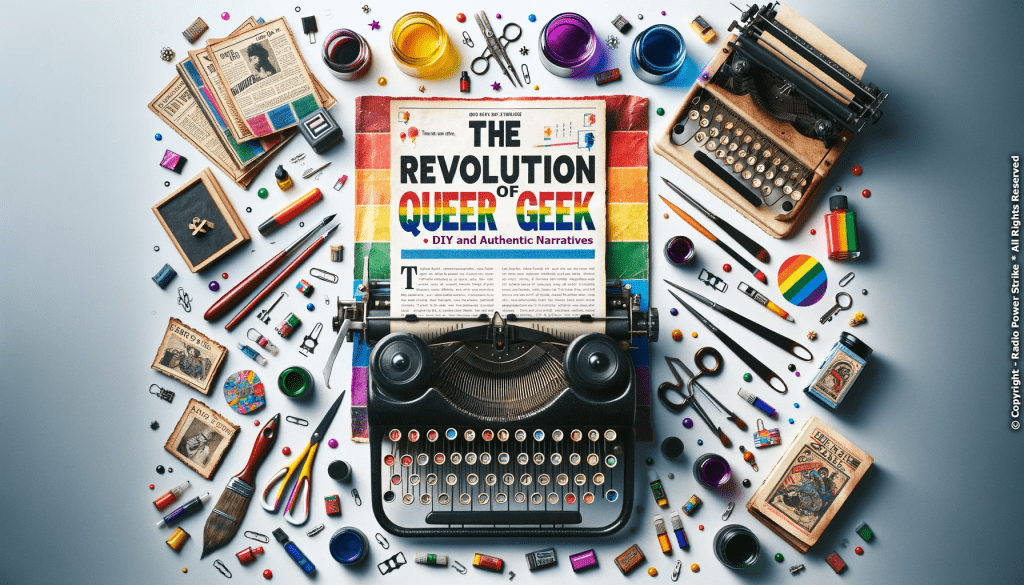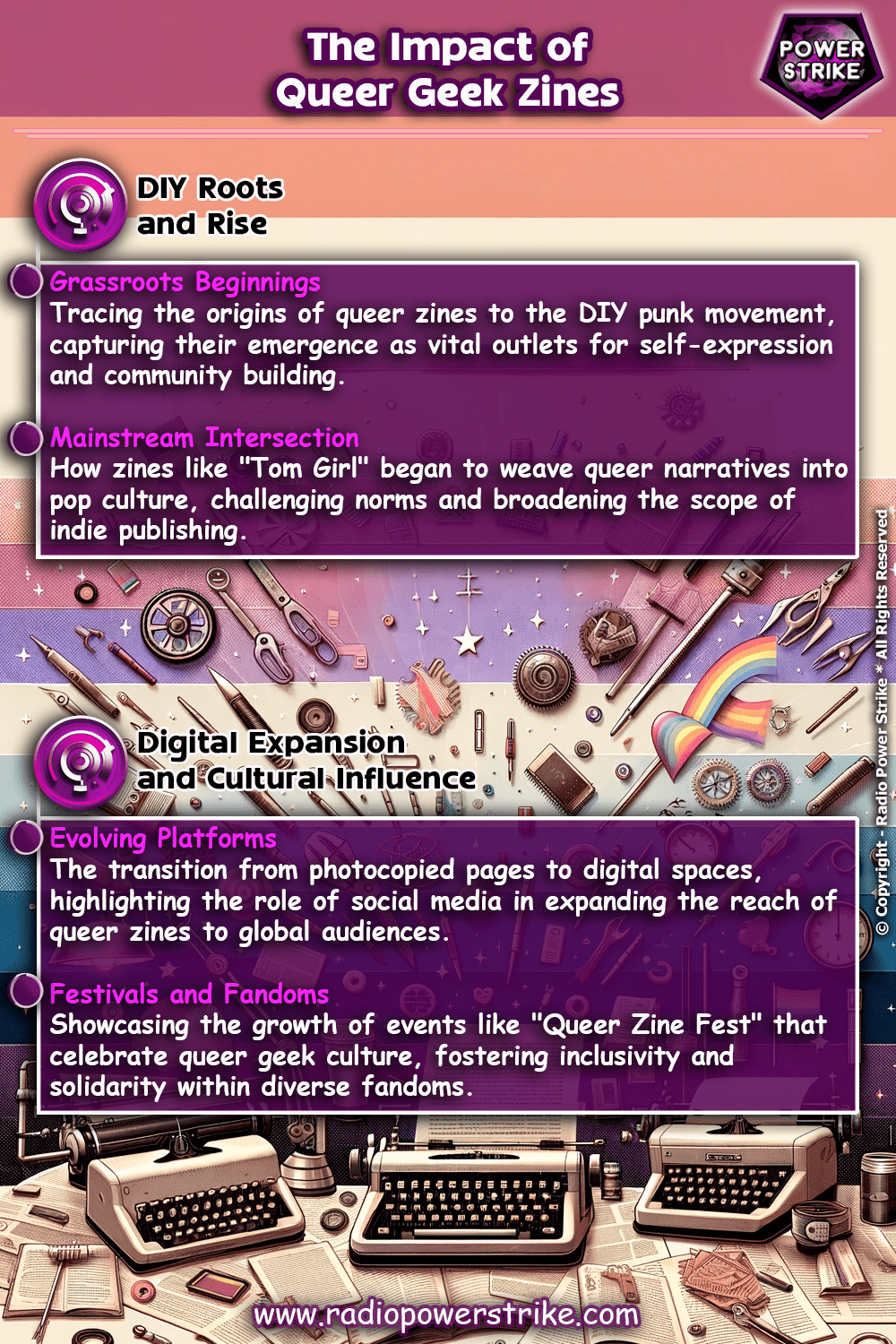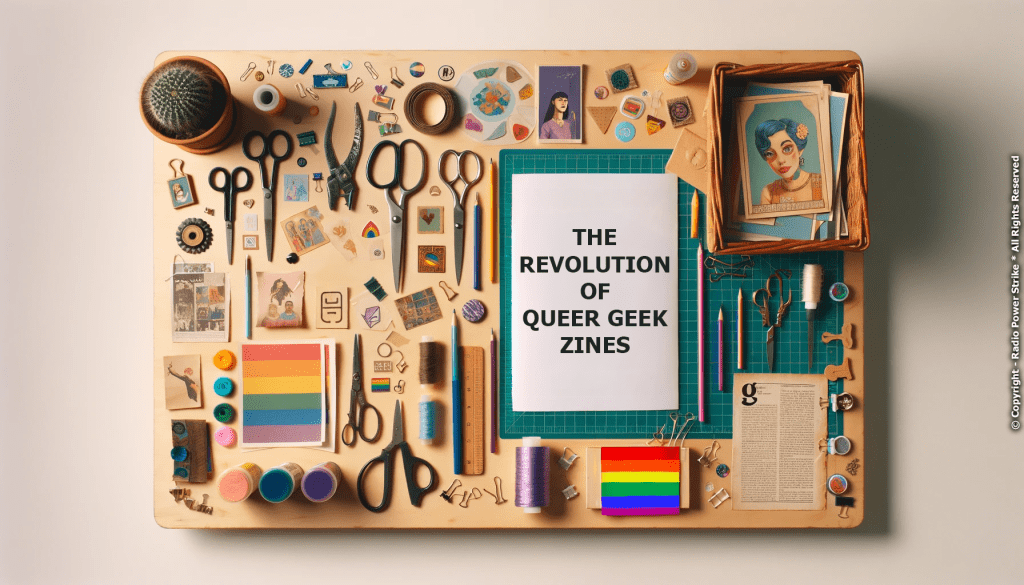The Revolution of Queer Geek Zines: DIY and Authentic Narratives
Crafting Personal Stories in the Age of Indie Publishing

The zine culture, rooted in DIY principles and raw passion, has been a powerful tool for marginalized voices seeking to carve out their space in the media world. Within the geek community, queer zines have become emblematic of this revolution. Transcending mainstream constraints, they offer authentic glimpses into the lived experiences of the LGBTQIA+ community. This exploration journeys through the transformative world of queer geek zines, celebrating their impact on indie publishing and queer representation.
The Birth of Queer Geek Zines: Grassroots Beginnings
In the early days, zines were a counter-culture medium, a response to the lack of representation in mainstream publications. They were the epitome of grassroots movements, handmade, and often photocopied in clandestine settings.
For queer geeks, zines were more than just publications; they were lifelines. Works like “J.D.s” by G.B. Jones and Bruce LaBruce in the late 1980s spotlighted queer punk scenes, fusing music, geek culture, and LGBTQIA+ identities.
Another prime example is “Chainsaw” by Donna Dresch, which bridged the worlds of punk rock and lesbian culture, leading to the inception of the iconic queercore movement.
Mainstream Meets Underground: The Intersection of Queer Zines and Pop Culture
As the 90s rolled in, the zine scene exploded. The intersection of queer zines with mainstream geek culture led to groundbreaking narratives that defied traditional norms.
“Tom Girl” by Liz Prince, for instance, delves into gender exploration through the lens of a tomboy, touching on themes familiar to many queer geeks navigating their identities.
“Quantify” by Katherine (a.k.a. Kadet Kuhne) brought forth a fusion of tech geekiness and lesbian culture, offering a unique perspective seldom seen in traditional media outlets.
In more recent times, platforms like Etsy and Kickstarter have further democratized the zine culture, allowing queer geek creators to reach wider audiences, bridging the gap between niche fandoms and broader pop culture.

Modern Queer Geek Zines: A Flourishing Ecosystem
Today’s digital age has amplified the reach and influence of queer geek zines. Platforms like Tumblr, Twitter, and Instagram have become hubs for creators and fans alike, fostering communities that transcend geographical boundaries.
Zines like “Queer Sailor Moon Fan Zine” embody this renaissance, blending a beloved mainstream franchise with unique queer interpretations, fostering inclusivity within fandoms.
Another commendable work is “The Gender Zine” which focuses on non-binary and genderqueer experiences, emphasizing the diverse spectrum of identities within the geek community.
With global events like the “Queer Zine Fest” celebrating these creations, it’s evident that queer geek zines have evolved from underground outlets to influential cultural touchstones.
Queer geek zines, with their vibrant blend of DIY ethos and genuine narratives, have not just challenged the status quo but have reshaped the very fabric of indie media. They stand testament to the power of authentic storytelling, of voices that refuse to be silenced, and of communities that rise in unity and creativity. As we move forward, the legacy of these zines continues to inspire, reminding us of the boundless possibilities that arise when passion meets purpose.


Comments are closed, but trackbacks and pingbacks are open.